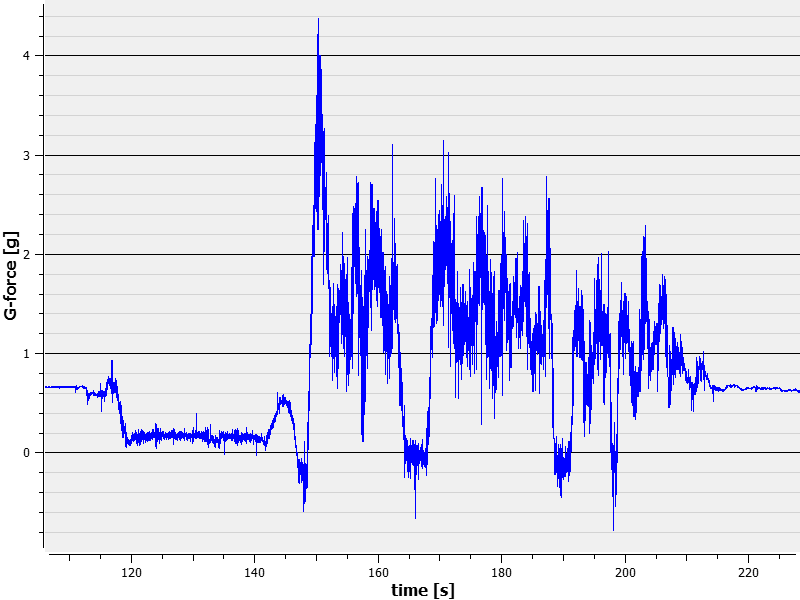A question for wolverinechris, because I could not let this go unchallenged.
From the part that you did read, how was it not 'objective'? Forces, timing and angular momentum were all covered in detail at each moment of the ride, and the variation between rides depending on the time of day or other conditions was accounted for. There can always be further distinctions due to differences in physiology that might cause different interpretations of the physical sense data, but otherwise from the part that you read, please find me a single statement on the force analysis that was not valid and I will change it right away.
However, since you stopped reading before actually reaching the actual conclusion I see you took the liberty of projecting your own, which was that the ride's quality can therefore be judged as a reflection of it's force readout charts, which you challenged as untrue and when on to make the conclusion that "as formal as this article may seem, I think it pretty heavily reflected the author's perspective and as a result was subpar." I will double-check but I do not believe that in the first half of the article there was ever a part that drew any such conclusion, it only stated a common point of criticism of the ride from many other enthusiasts as a possible weakness which would need to be analyzed further to see if it holds water in a final assessment of MF's overall quality. You got to the part that determined that "yes, these accusations that the ride is for the most part forceless and has slowly timed elements with long transitions" is in fact true, however, completely missed the next part of the article that then argued against such claims for being a necessary condition for downranking the coaster's overall quality. There's a line in there that directly dismisses the force part of the analysis as 'mistaken' in making any final judgements about the ride, and then it goes on to defend the ride against these accusations.
By the way, simply stating that "there's a huge amount of speed" as an objection to this imaginary conclusion does not hold up to scrutiny very well because it's missing an obvious defense: if it's just about "speed" then the next time you fly you should be really excited, in fact the earth is traveling incredibly fast as you read this so your mind should be absolutely blown. Simply put, humans cannot sense speed, so your argument against the imaginary conclusion you applied to the article fails if it were to be taken on it's own. Although hopefully if you find the time to read the second half of the article you will be pleased to find a justification for the 'speed defense' that assesses what is *actually* referred to when we state speed as a positive quality for the ride, as well as numerous other defenses of the coaster that do not take into account force readouts whatsoever.
P.S. I apologize if there is too much text to read through in a single sitting, that is by no means any fault of your own as we all lead very busy lives and things such as coaster analyses should take backseat precedence to other more important tasks. However, barring any excessive rhetorical flourishes that were included to help make the analysis more entertaining for the casual reader, it is very important that shortcuts not be taken only for the sake of cutting down on the reading time; i.e. assuming that 'speed' automatically refers to the peripheral sensations associated with it without ever defining them, or dismissing the 'forceless criticisms' without first testing whether or not it's even true, or even making the assumption that a coaster needs to be 'exciting' to be good... try finishing the article and you may find that it goes even further opposite the conclusion you invented for it than even you might be willing to argue for it (fyi, there intentionally wasn't any final conclusion about the ride's quality, that was left for the reader to determine on their own after being given enough points and counterpoints from both the pro and against positions of the rides quality.)

